You must have heard the tales of Mughal Emperor Akbar, his longing pain to bear a child, his famous chief, Birbal, and his ‘Navratans’ (Nine Gems)!
Nonetheless, his life was glorious, and he influenced many people with his beliefs and ideologies.
Akbar chose his place to be cremated when he was breathing. And this post is about the place he decided – Sikandra in Agra.
You have been listening about the Mughal ruler Akbar since you were a kid in school. Many things made his kingdom shine – be it Birbal’s intelligence, Tansen’s music, his wife Jodha Bai, or the ideology “Deen-e-Ilahi.”
Akbar was a brave warrior, settled politician, and skilled ruler. Therefore, he is also entitled to “Great.”
Video Tour
Where is Sikandra?
Having explored Fatehpur Sikri and Agra Fort, Sikandra was the next stop of Team MW, located at a distance of 10 kilometers from Agra.
This is the place where the tomb of Akbar is situated as per his wish. It was once known as Bihistabad, which later became Sikandra after Alexander Lodi came to power. It is so because Alexander was called Sikander in Persian.
Lodi Tomb of Sikandra
Upon reaching the site of Sikandra, the first architecture that you encounter after the ticketing window is the Lodi Tomb of Sikandra. Please don’t confuse it with Sikander Lodi’s tomb in Lodi Gardens, Delhi. It’s an anonymous tomb belonging to the Lodi dynasty as per its architecture.
The mausoleum was at a height, so I climbed up. It looks like a square-shaped architecture, but the corners have been cut to make it octagonal. There is a hall in the middle surrounded by four spacious rooms from all sides.
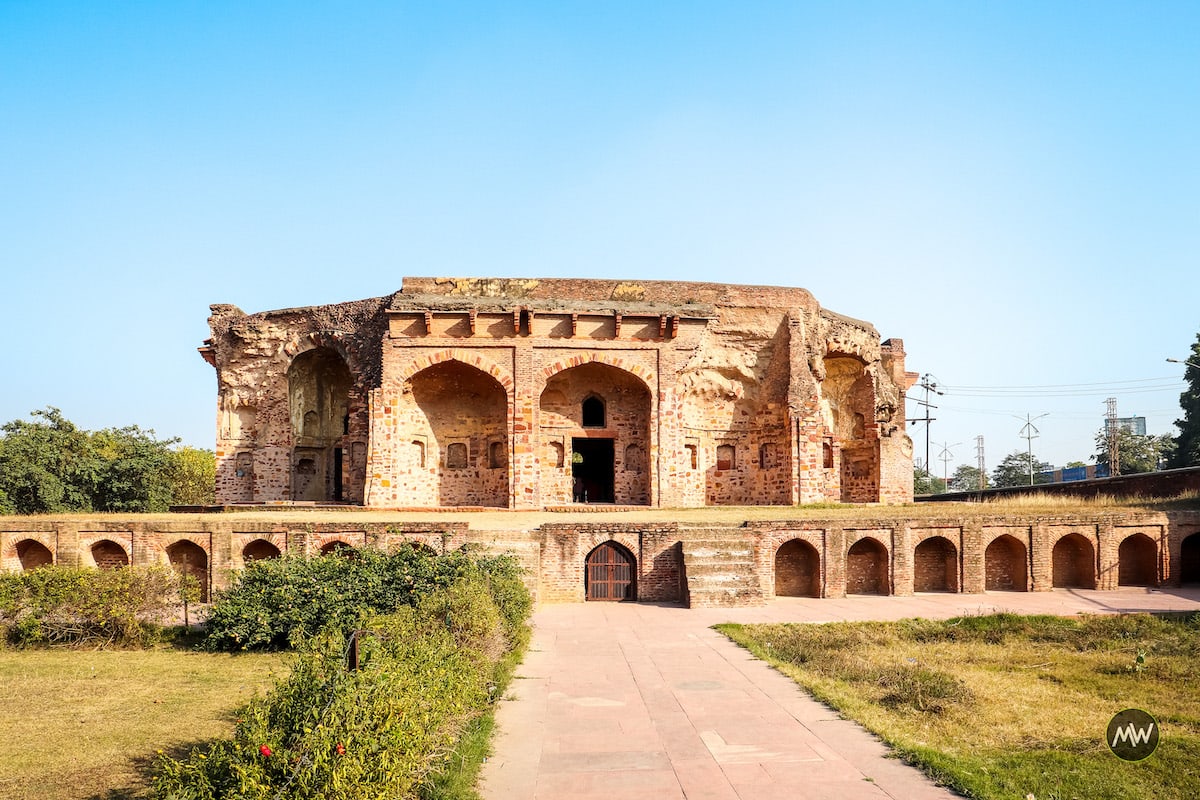
There are two tombs, but it’s hard to identify them. A female worker standing nearby said, “This is Lodi Mahal,” when we were busy admiring the beauty.
The architecture is thick plaster over the top. There is also a finish of lime. The dome is destroyed, but I can say it resembles some Delhi domes. Hence, this must have been of the Lodi dynasty.
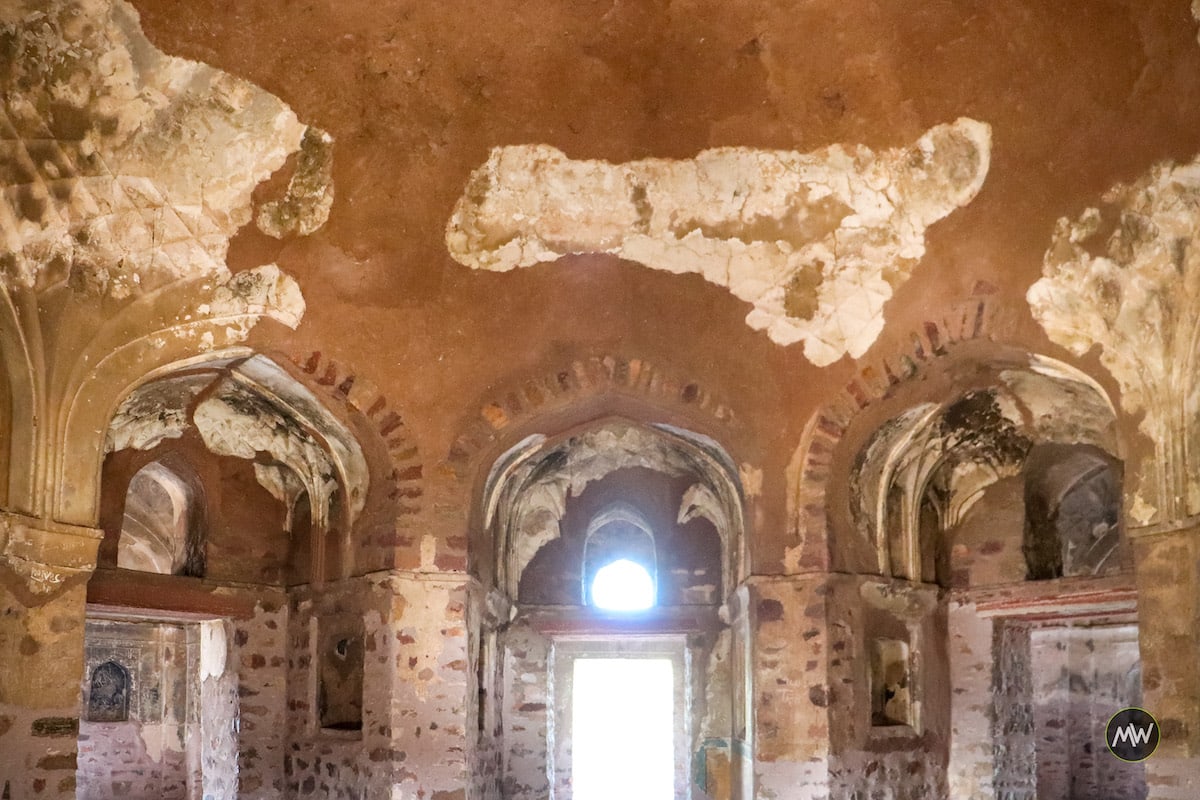
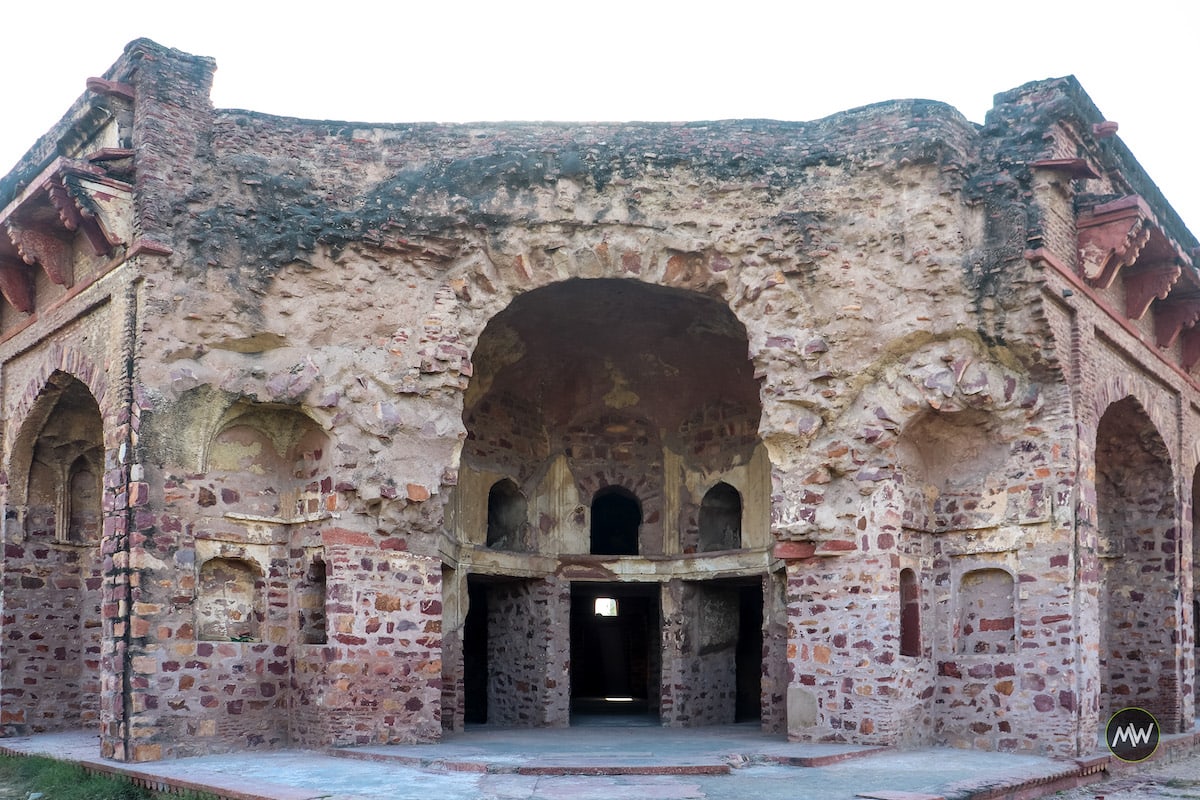
Kanch Mahal
Further, as you move forward, there’s another small yet attractive palace called the Kanch Mahal. Jahangir used this palace as his hunting ground. Built from 1605-to 1619, it was also used as a harem, i.e., a women’s abode.
This square-shaped palace is a double-storeyed building, with rooms on the top and bottom floors constructed in a similar series. Two forged vents are facing outwards on the upper part, and the same vents are also on the right and left sides.
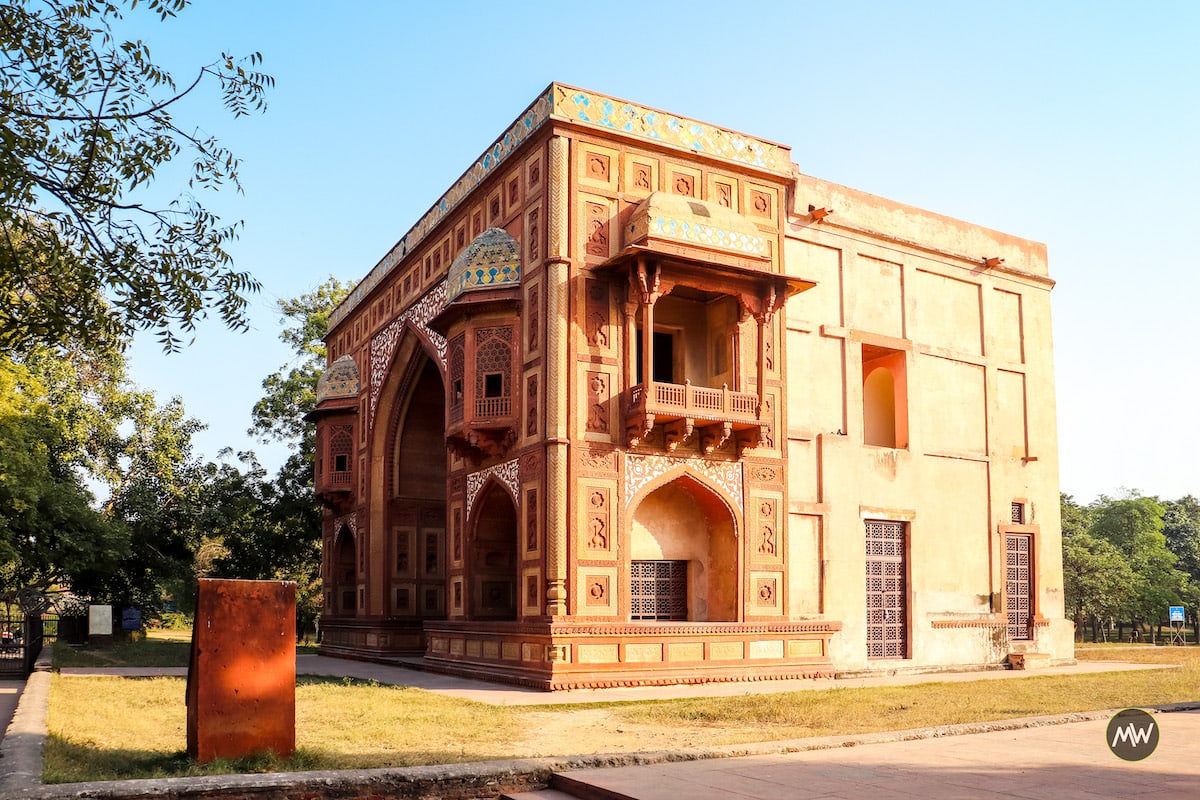
The ordered combination of flowers, elephants, and other geometric shapes adds to its beauty. The metaphors and motifs on the walls are displayed with red stone fine feature art (fine workmanship).
Blue, green, orange on the terraced roofs and blue and yellow tiles have been used on the glass, which helps it shine, and due to this ornamentation, it is called Kanch(glass) Mahal.
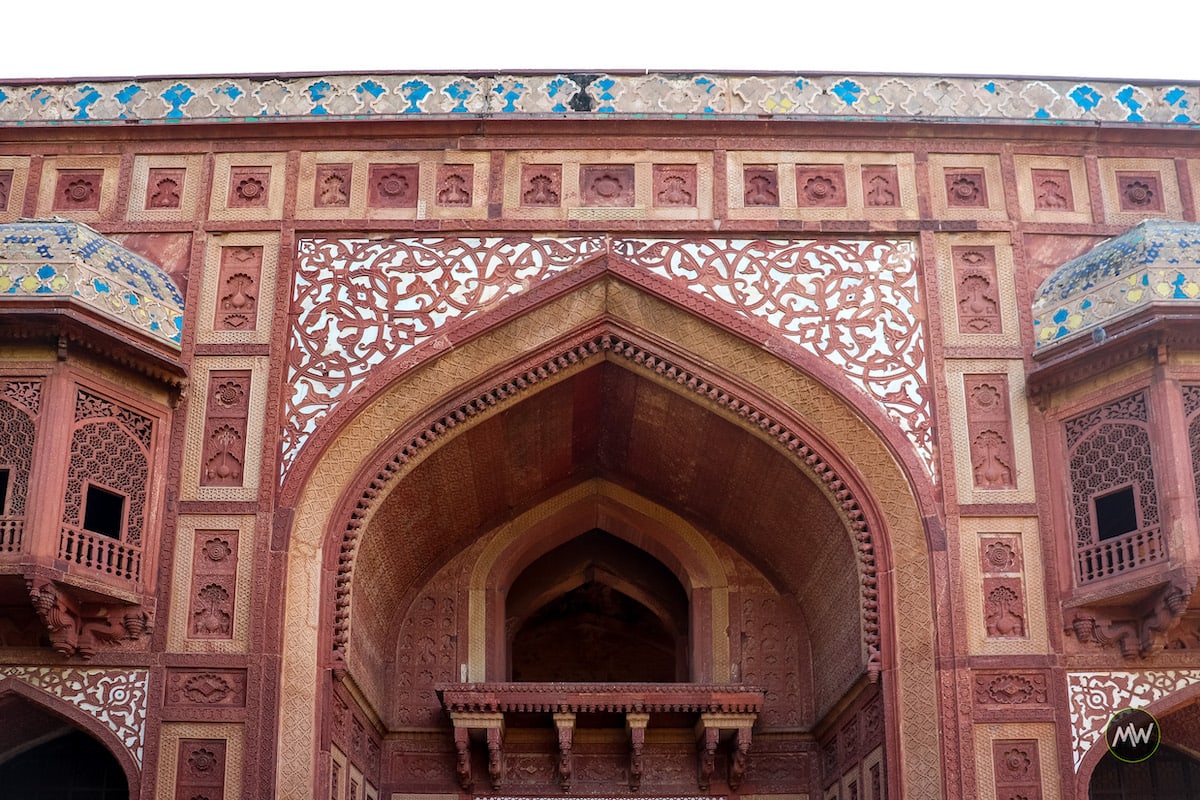
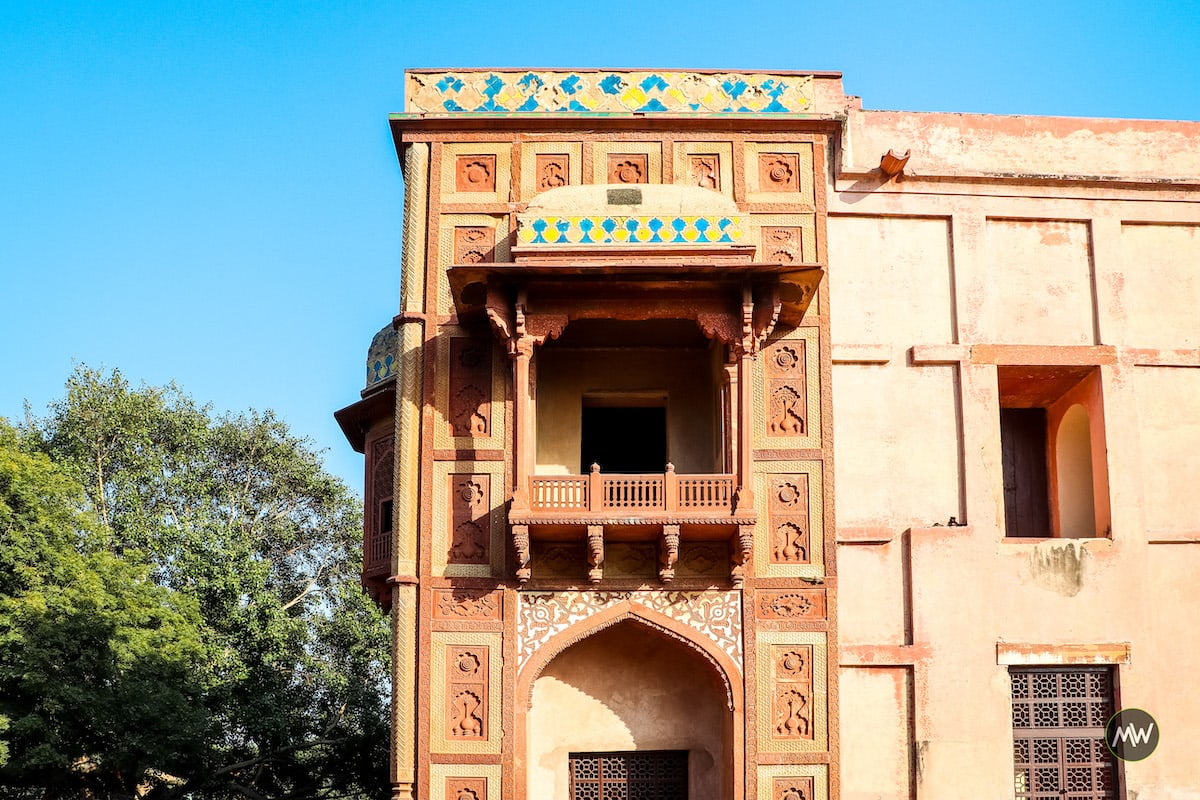
The Breath-Taking Entry Gate of Akbar’s Tomb
After walking a few steps from Kanch Mahal, I reached a bustling place. Everyone was busy taking selfies in front of Akbar’s tomb’s grand and attractive entrance.
In front of this beautiful doorway is a small circular garden that acts as a perfect spot for cool clicks.
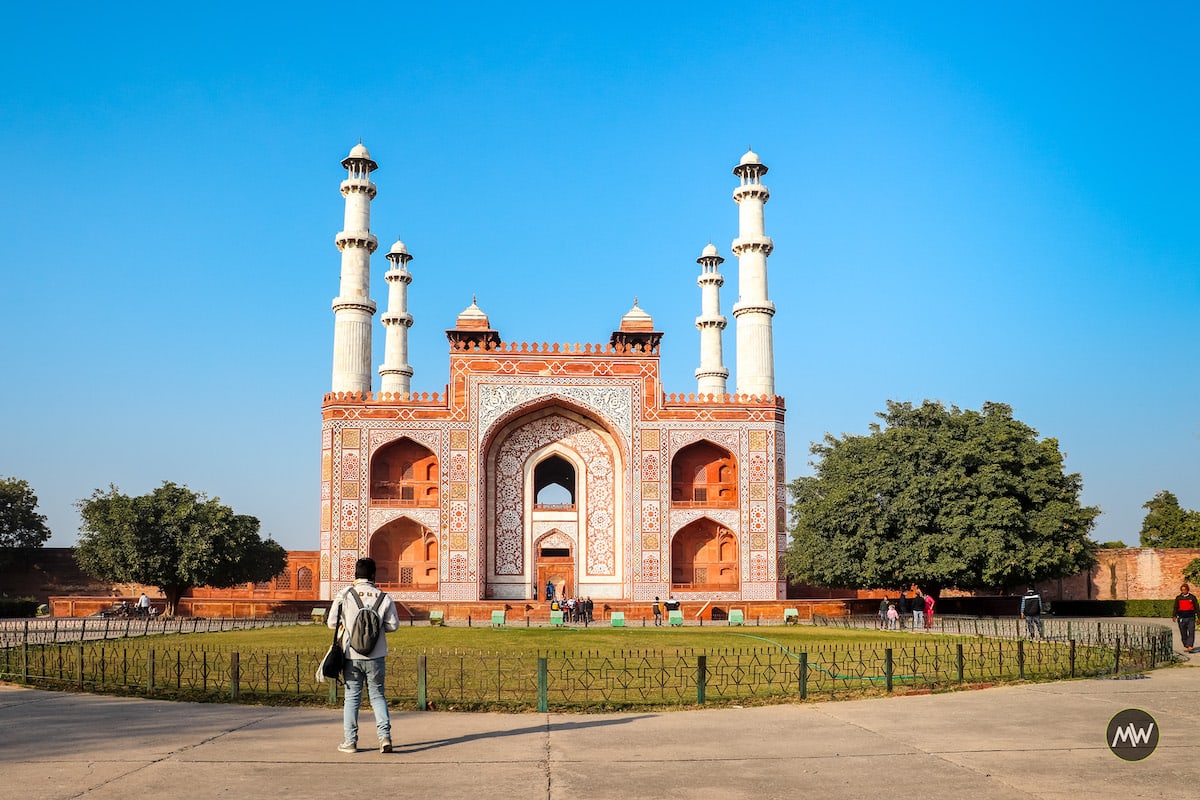
The gate is a double-storeyed building with two small chhatris in front as typically seen in Rajput architectures. Also, there are four minarets on the top four sides, which are built of white marble. But they were not part of the original base; they were added later. For a moment, if its minarets are ignored, then it appears to be just like a Rajput-style entrance.
It is made of red sandstone and the fine workmanship done to the ornamentation makes it even more mesmerizing.
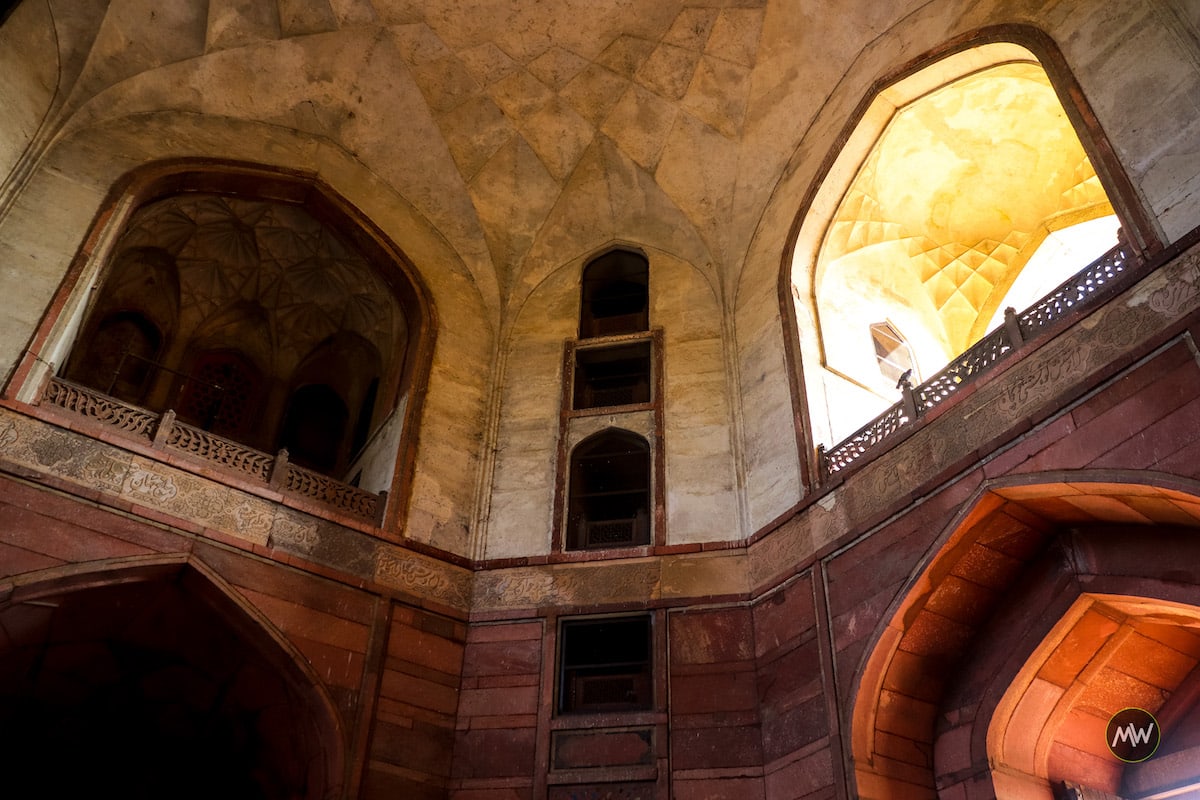
I could also see the symbol of the holy Swastika of Hinduism engraved in it. It shows that during Akbar’s time, everyone was given the right to practice their beliefs and worship their God.
Akbar’s Tomb at Sikandra in Agra
Upon entering, you will come to see a wide-open garden with the building that contains Akbar’s tomb, situated in the middle. Entry gates are also there at the other three corners of the garden. But most of them are in a weak state.
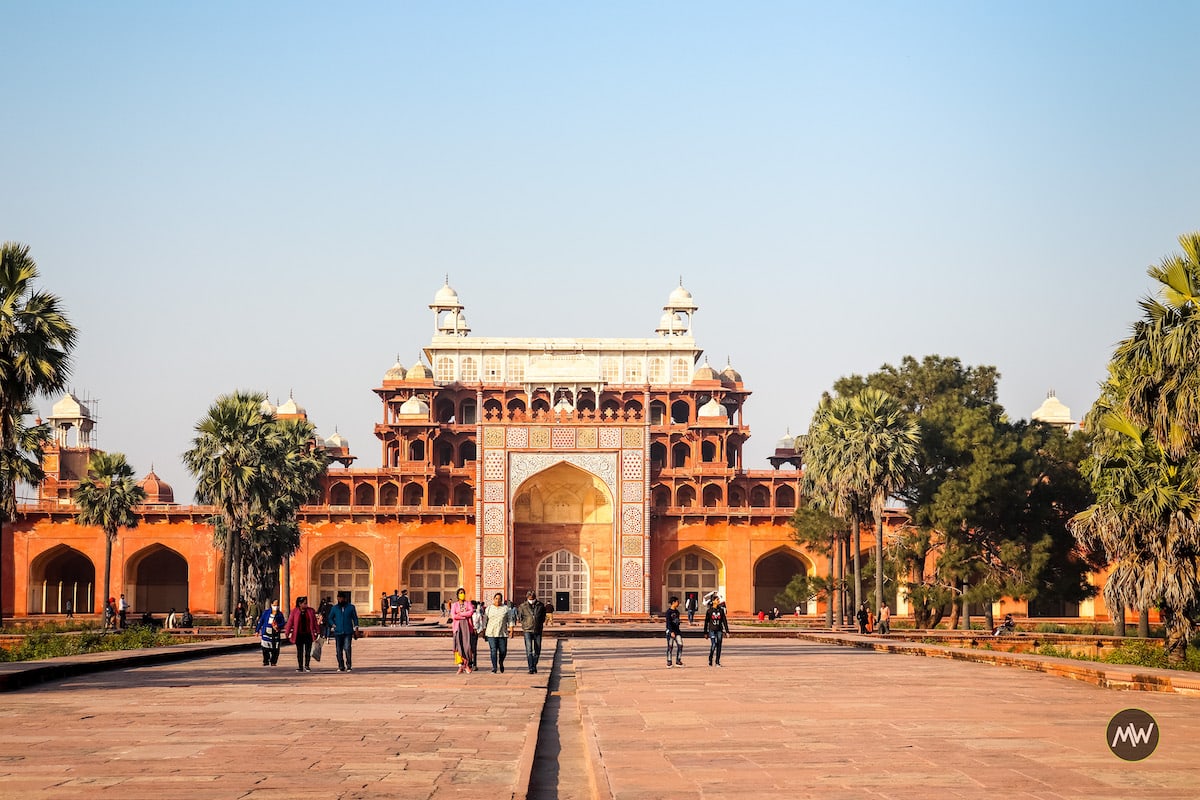
The one thing that surprised me the most was that the main building has no domes or towers. There is a fountain just in front of the cemetery which is now non-functional.
At first glance, one can doubt if it’s Mughal architecture at all. From an architectural perspective, it appears to be a mixture of Mughal and Rajput architecture. The combination of chhatris above and the coconut trees in front looks fantastic.
You will see deers and some other friendly animals wandering freely. No tourists are allowed to roam in the garden.
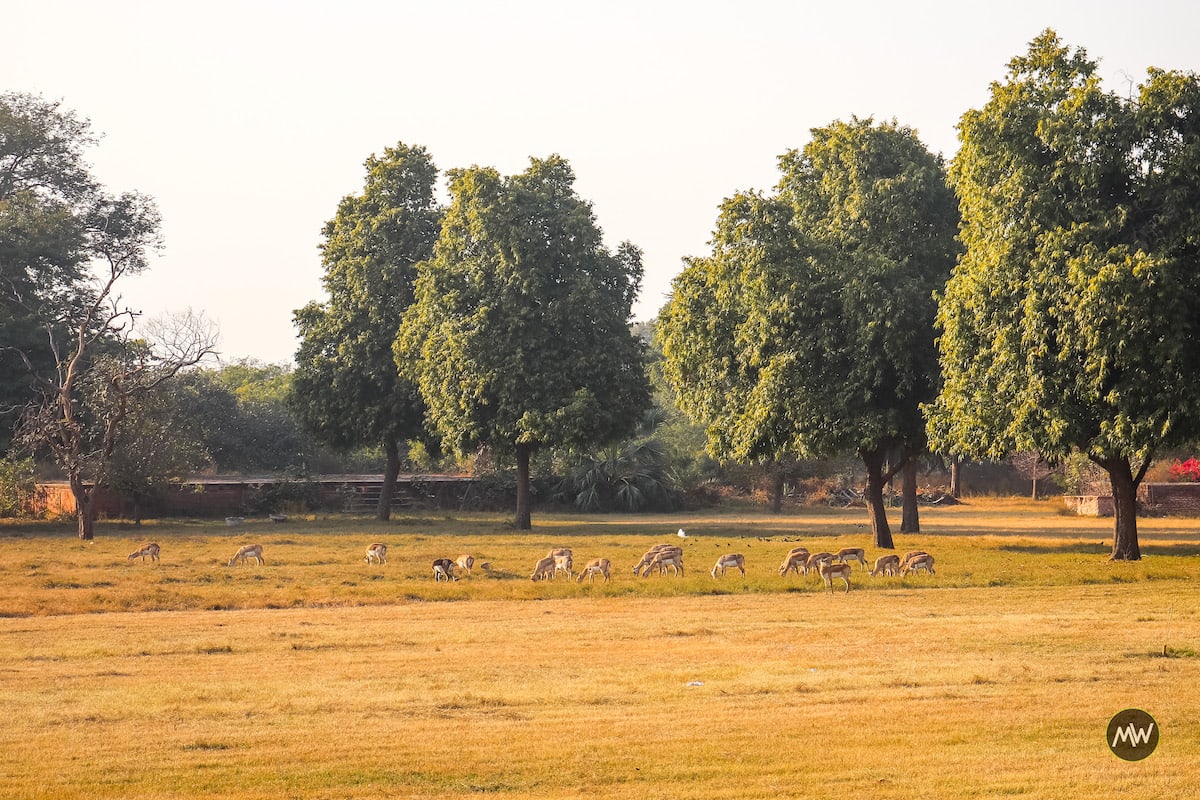
Inside the main building, a lamp hangs upwards, which at that time used to glow. The geometric shapes and artistry on the walls combined with different colors will hook your eyes.
A slope-like path leads down the basement, which I found no less than a cave.
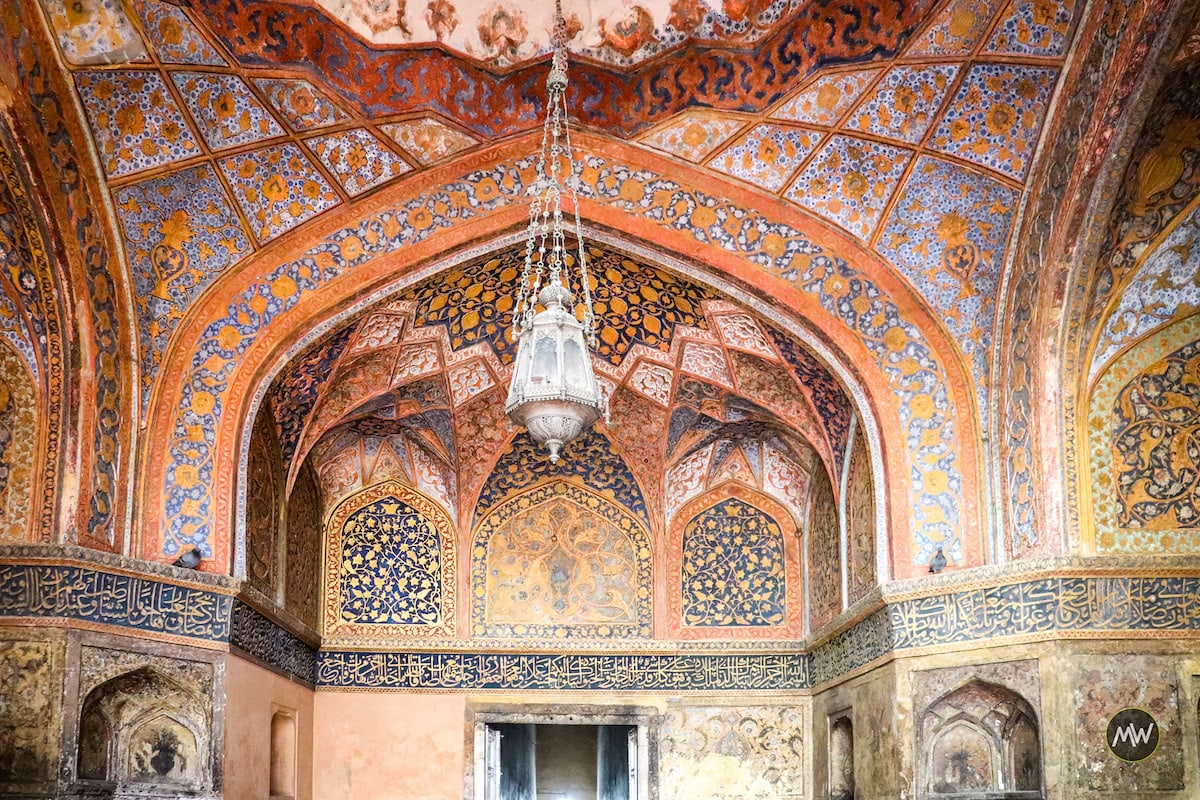
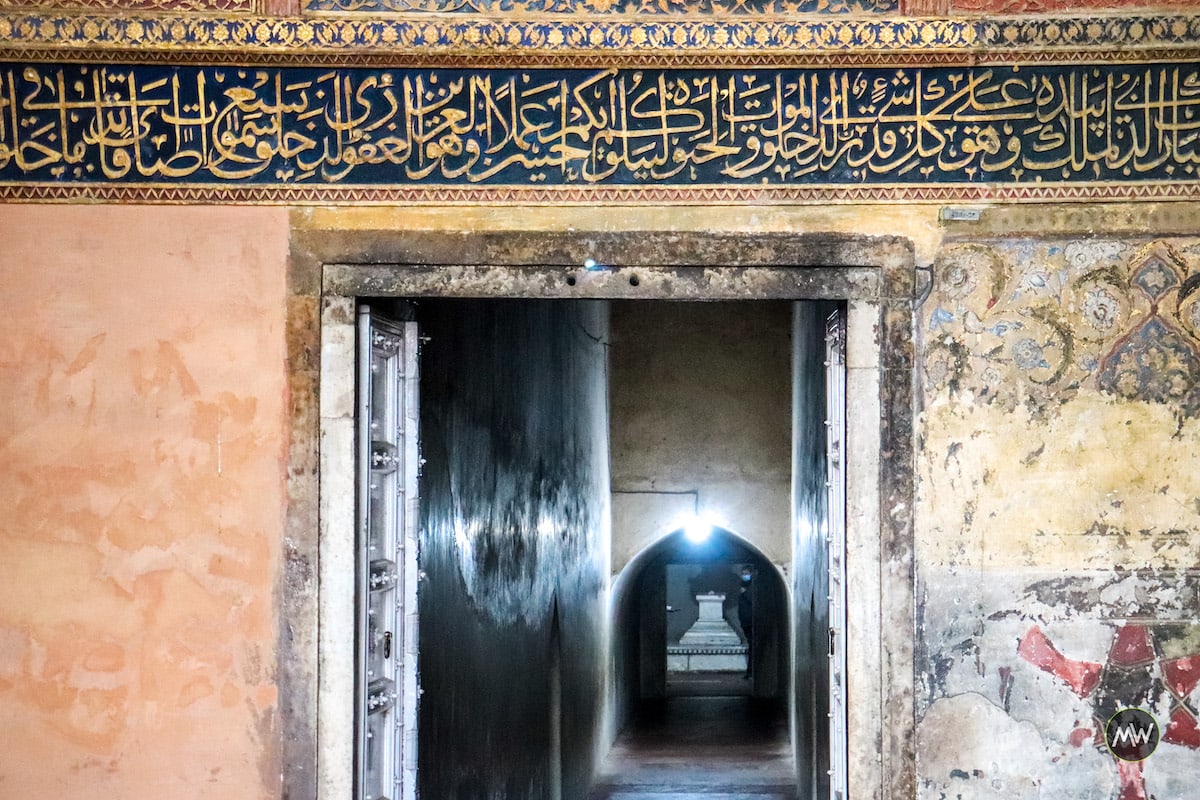
There are no posh carvings, no magnificent artwork; I was shocked that one of the greatest rulers of Indian history and his burial ground is so ordinary.
Then I came to know that in 1688, the Jats of Bharatpur attacked under the leadership of Raja Singh and plundered golden wall layers and precious jewels around the tomb. Later it was renovated by the British Governor-General Lord Curzon.
You will see some other tombs which may have been of Akbar’s daughters or Begums after coming outside. The north gate has been destroyed, and the area around it is deserted. There is no permission to go there.
Akbar’s Death and the Construction of the Mausoleum
After Akbar, his son Jahangir took over the Mughal Empire. History tells that Jahangir was a nefarious man who annoyed his father a lot. Akbar did not hesitate to cover his mistakes. But in 1591, he tried to poison Akbar, but somehow the emperor survived, then later, Jahangir rebelled in 1601, intending to become king.
How long would anyone fight against his son? Akbar eventually declared Jehangir the next emperor. During that time, Akbar grew old and was suffering from dysentery and died due to lack of proper treatment.
It is said that Akbar chose this place for a mausoleum while he was alive and started its construction. His death made the whole of Agra and Delhi drown in weeps.
Later, Jahangir hired new artisans and constructed it on 119 acres according to his own. It took 5-7 years to build Akbar’s mausoleum.
Ticket Rates of Sikandra, Agra
| Indian Tourists | INR 30 |
| Tourists from other SAARC countries | INR 35 |
| Other foreign tourists | INR 310 |
Note: Due to COVID-19, physical ticketing is closed and you can use the QR code at ticketing windows to buy tickets online. You can also book tickets using the Monuments of Agra app on iOS or Android.
Practical Travel Tips
- The camera is allowed at no extra charge.
- If you are going in summer, then keep a bottle of water with you.
- Please wear a mask and follow social distance.
- Do not try to go inside the garden or engage with animals.
- Do not write anything on buildings and do not contaminate them.
- Do not forget to sit for some time and enjoy the quiet environment around.
- Tuk-tuk is easily available from Agra to Sikandra. You can also use Uber or OLA.
Conclusion
The thing that will impress you the most is the peaceful atmosphere. You could hear the sound of birds, the tinkling of leaves, and the rustlings of the wind.
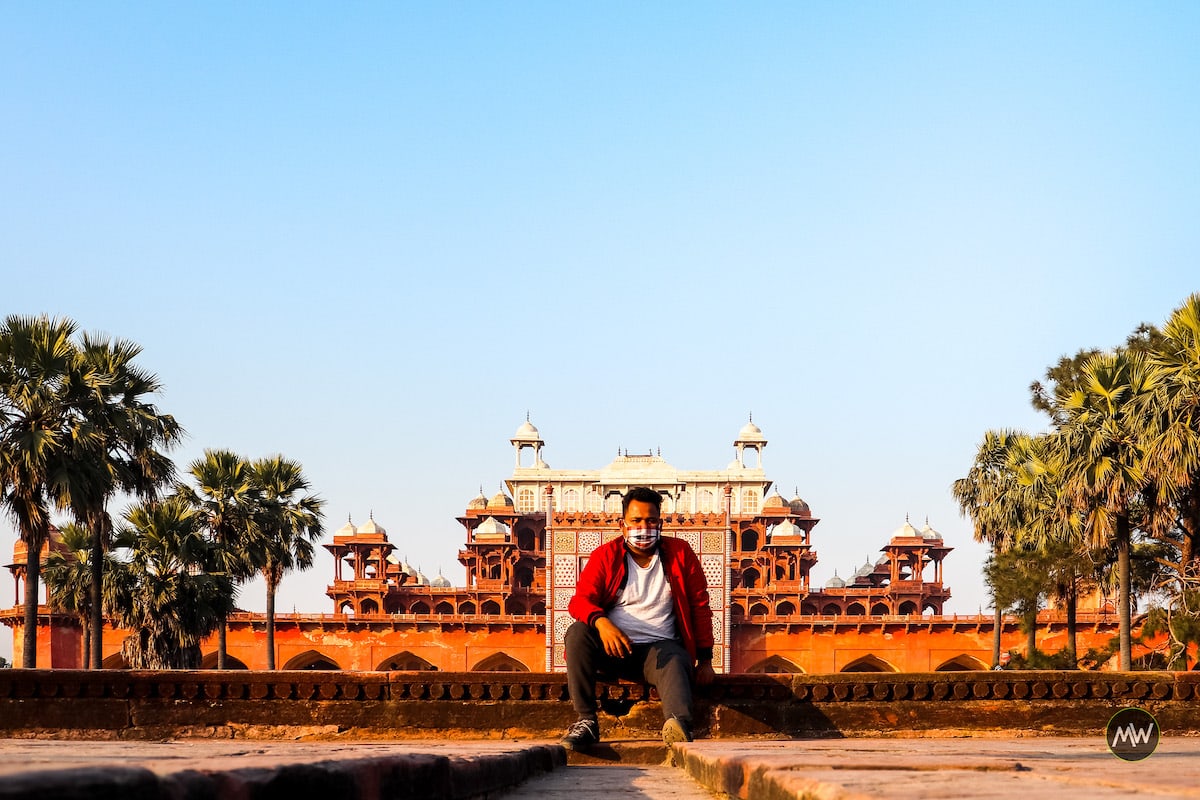
Only a handful of people visit this place as most tourists unintentionally ignore it due to the glare of the Taj Mahal. But with this post, I want to say Agra is much more than Taj.
This place is worth visiting, and it doesn’t matter if you’re a history buff, peace lover, or passionate photographer. I hope this article will help you in the same.
Got anything to say? Please tell us in the comment box below. We are willing to make every effort to improve ourselves further and help you.
An appeal: Please do not throw litter around. Use a dustbin and if you can’t find one, take the trash with you and throw it when you find it. Your small steps like this one can make the world clean and green.


Love the way you have explained everything. I have been to these sites when I visited Agra. To be honest, I found Fatehpur Sikri more fascinating than Taj Mahal. Would love to visit Kanch Mahal.
Thanks, Renuka, for your wonderful words. And yes I’d agree with you, Agra is much more than the Taj but unfortunately, other marvels get diminished in its limelight. I’d urge you to visit Sikandra when you go to Agra next time 🙂